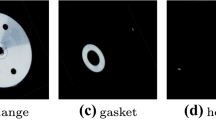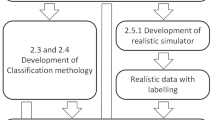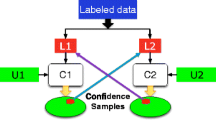Abstract
The usefulness of an automatic workpiece classification system depends primarily on the extent to which its classification results are consistent with users' judgments. Thus, to evaluate the effectiveness of an automatic classification system it is necessary to establish classification benchmarks based on users' judgments. Such benchmarks are typically established by having subjects perform pair comparisons of all workpieces in a set of sample workpieces. The result of such comparisons is called a full-data classification. However, when the number of sample workpieces is very large, such exhaustive comparisons become impractical. This paper proposes a more efficient method, called lean classification, in which data on comparisons between the samples and a small number of typical workpieces are used to infer the complete classification results. The proposed method has been verified by using a small set of 36 sample workpieces and by computer simulation with medium to large sets of 100 to 800 sample workpieces. The results reveal that the method could produce a classification that was 71% consistent with the full-data classification while using only 10% of the total data.
Similar content being viewed by others
References
A. Bhadra and G. W. Fischer, “A new GT classification approach: a data base with graphical dimensions”, Manufacturing Review, 11, pp. 44–49, 1988.
C. S. Chen, “A form feature oriented coding scheme”, Computers and Industrial Engineering, 17, pp. 227–233, 1989.
M. R. Henderson and S. Musti, “Automated group technology part coding from a three-dimensional CAD data-base”, Transactions of the ASME Journal of Engineering for Industry, 110, pp. 278–287, 1988.
S. Kaparthi and N. Suresh, “A neural network system for shape-based classification and coding of rotational parts”, International Journal of Production Research, 29, pp. 1771–1784, 1991.
T. Lenau and L. Mu, “Features in integrated modeling of products and their production”, International Journal of Computer Integrated Manufacturing, 6(1 and 2), pp. 65–73, 1993.
M. C. Wu, J. R. Chen and S. R. Jen, “Global shape information modeling and classification of 2D workpieces”, International Journal of Computer Integrated Manufacturing, 7(5), pp. 216–275, 1994.
M. C. Wu and S. R. Jen, “A neural network approach to the classification of 3D prismatic parts”, International Journal of Advanced Manufacturing Technology, 11, pp. 325–335, 1996.
S. H. Hsu, T. C. Hsia and M. C. Wu, “A flexible classification method for evaluating the utility of automated workpiece classification system”, International Journal of Advanced Manufacturing Technology, 13, pp. 637–648, 1997.
S. K. Thompson, Sampling, John Wiley, New York, 1992.
W. Labov, “The boundaries of words and their meanings”, in C.-J.N. Bailey and R. W. Shuy (eds) New Ways of Analyzing Variations in English, Washington, DC: Georgetown University Press, 1973.
S. J. Chen and C. L. Hwang, Fuzzy Multiple Attribute Decision Making — Method and Application, A State-of-art Survey, Springer-Verlag, New York, 1992.
H. Bandemer and W. Nather, Fuzzy Data Analysis, Kluwer Academic Publishers, 1992.
F. Bouslama and A. Ichikawa, “Fuzzy control rules and their natural control laws”, Fuzzy Sets and Systems, 48, pp. 65–86, 1992.
H. J. Zimmermann, Fuzzy Set Theory: and Its Application, 2nd edn, Kluwer Academic Publishers, 1991.
S. K. Tan, H. H. Teh and P. Z. Wang, “Sequential representation of fuzzy similarity relations”, Fuzzy Sets and Systems, 67, pp. 181–189, 1994.
G. J. Klir and T. A. Folger, Fuzzy Set, Uncertainty, and Information, Prentice-Hall, 1992.
Author information
Authors and Affiliations
Corresponding author
Rights and permissions
About this article
Cite this article
Hsu, S.H., Hsia, T.C. & Wu, M.C. An efficient method for creating benchmark classifications for automatic workpiece classification systems. Int J Adv Manuf Technol 14, 481–494 (1998). https://doi.org/10.1007/BF01351394
Issue Date:
DOI: https://doi.org/10.1007/BF01351394




